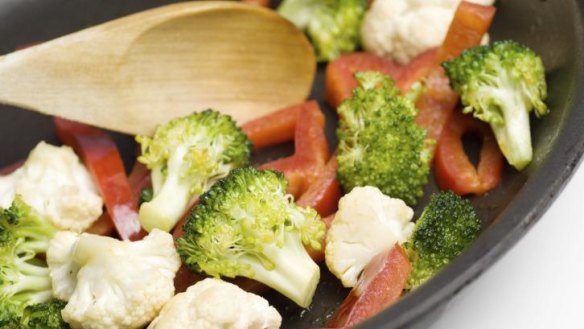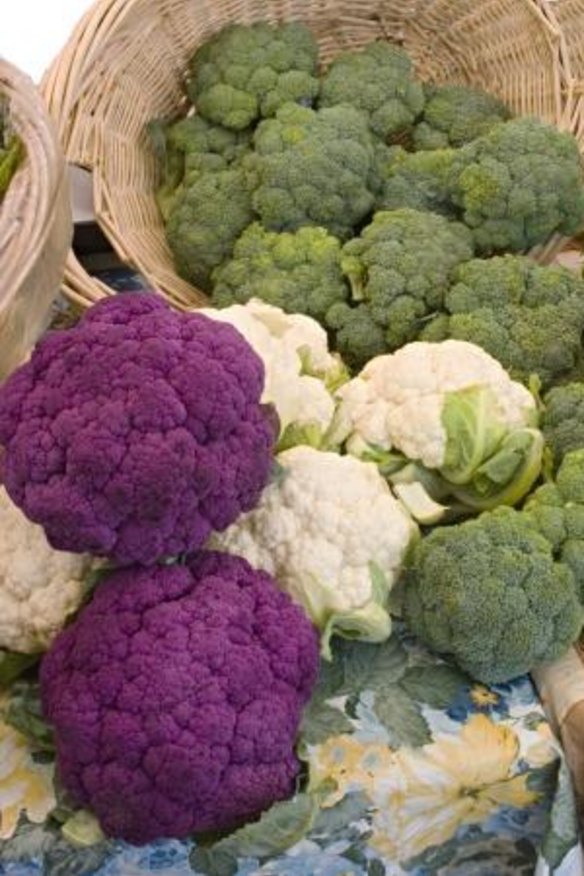Brassicas for winter need sowing in summer

Many of you will be enjoying the harvesting of summer fruits and vegetables. You will be tasting home-grown tomatoes, picking beans, cucumbers and salad greens.
It's worth thinking now to what you wish to grow for a winter harvest. This is because you need to get the seeds planted out very soon, so that germination and early growth can occur before the cooler nights return. The main group are the brassicas, which have been grown for millennia in Europe, with the Romans taking primitive varieties to all ends of their empire. Broccoli was only introduced into France by Catherine de Medici in 1560, from Italy. Italian pioneering settlers took broccoli seeds with them to the New World and began setting up gardens around New Amsterdam and Boston.
The brassica family of vegetables grow best in the cooler months of the year, so planting seeds in the next few weeks will provide you with late autumn and winter crops. Timing is critical as growing rates slow down considerably after March so you do need to get the plants well established in the coming weeks.

One of the challenges we will often face is that our garden beds are completely full at the moment with summer vegetables. If this is the case for you, then sow your winter vegetable seeds into a propagation tray or dedicated seedbed and then transplant into the main garden beds in early March, when space becomes available.
Ensure that you follow crop rotation and do not plant out other brassicas where you have grown kale this past summer.
Golden Acre is a good mini-sized cabbage to grow in the home garden; it is sometimes referred to as Earliball. The heads will only grow to around 15 centimetres in width, so you can plant the seedlings quite close. It is also a fast-growing cabbage, maturing in just 8-10 weeks. The other winter cabbage that I like to grow is the Savoy, with its very crinkled leaves. They will produce very large, dark green heads, taking around four months to mature.
Grow your cabbages as quickly as possible keeping them well watered but not waterlogged. Give them fortnightly supplements of a liquid seaweed or fish-based fertiliser.
There is now quite a range of broccoli varieties available. Belstar is a good hybrid variety that produces a tight domed head which can be 15 centimetres across. It will produce a good second harvest of side shoots after the main head is harvested. Di Ciccio is a good variety from Italy that produces a central head about 8-10 centimetres in size. It will also produce an extended crop of side shoots later on. Romanesco is good to grow in cooler climates, producing a head with spiralling lime green patterns. It has a delicate flavour.
The other sub grouping of broccoli is the Calabrese (meaning from Calabria). Many families of our local Italian Australians would have grown this in decades past. There are green and purple forms of this sprouting broccoli. The main characteristic is the myriad of small heads up each stem of the plant. Green Sprouting, Green Dragon and Purple Sprouting are good varieties.
After you have propagated the broccoli in seed trays, transplant the little seedlings into 10-centimetre pots and then plant them in the garden when they are 10-12 centimetres tall. Leave 50-60 centimetres between each plant. Broccoli needs to grow in a warm, sunny location with deep soil to which has been added lots of compost. Again, give the plants a fortnightly feed of seaweed or fish emulsion fertiliser.
Cauliflower are the white cousins of broccoli. Their traced origin goes back to Cyprus where they were goring 2500 years ago. The best growing conditions are relatively low temperatures and short day lengths, to help produce a good, tight flower head. Phenomenal Early grows quickly and produces large snow white heads. All Year Round produces large pure white heads after five months. Paleface will take longer to mature but it is well suited to cooler districts.
The biggest pest for all brassicas is the cabbage white butterfly with its little black dots on the wing tips. Plants susceptible to attack from the cabbage moth and cabbage white butterfly include cabbage, broccoli, Brussel sprouts, Chinese cabbage, celery, beetroot and rocket.
Eggs are laid by the butterfly on the underside of leaves of all brassicas. Then the larvae hatch out and begin to enjoy the young, succulent leaves, doing major damage as they advance.
You can pick off the little caterpillars by hand before they do much damage, if you have just a few plants. Look closely along the underneath veins of the leaves. If you have hens, they will enjoy a special treat of caterpillars and slugs that you physically remove from garden plants. A fine-weave butterfly net can be spread over the rows to prevent the butterflies from beginning their cycle.
Alternatively, use Dipel spray which acts on the intestines of the caterpillars and kills them. The bacillus thuringiensis is a bacterial stomach poison just for caterpillars. It needs to be ingested by an actively feeding pest and will kill them in three to five days. This product is harmless to bees, mammals and all other beneficial insects. It degrades quickly in sunlight, so you may need to undertake repeat sprayings if infestation is bad.
500g broccoli florets
400cm cauliflower florets
2 tsp extra virgin olive oil
4 garlic cloves, finely chopped
2 shallots, finely chopped
½ green capsicum, finely chopped
½ red chilli, finely chopped
1 tsp paprika
1 tbs lemon juice
Place the broccoli and cauliflower florets into a large pot of boiling water and simmer for five minutes. Drain off the water and set aside.
Pour the olive oil into a deep pan and warm to a low heat. Toss in the garlic, shallots, capsicum and chilli and paprika, and cook for 3 minutes, stirring regularly. Pour in the lemon juice then add in the brassicas and heat well.
* Water deeply, twice weekly. Keep all garden beds well weeded and thickly mulched.
* Plant out fast-growing cucumbers and beetroot for an autumn harvest. Sow leek and kohlrabi seeds. Plant out a row or two of parsnips.
* Early potatoes can be harvested as needed by bandicooting (just digging around the sides of the mound and removing one or two potatoes from each plant, then covering up again).
* Keep the areas underneath fruit trees clean by gathering up any windfalls. Also remove any diseased or infected fruits and dispose of them completely.
* Turn your summer compost and mix in some fresh, green grass clippings and vegetable scraps to keep the decomposition process moving along. If possible, also add in some animal manure.
Owen Pidgeon runs the Loriendale Organic Orchard near Hall.
Restaurant reviews, news and the hottest openings served to your inbox.
Sign up